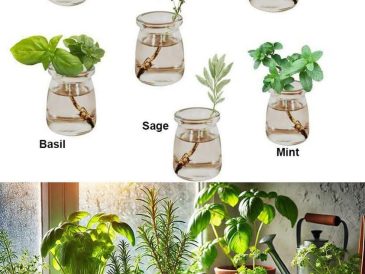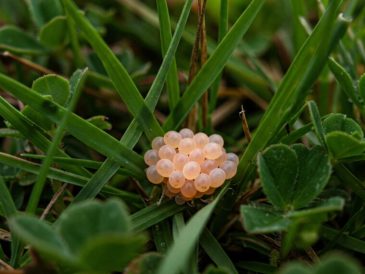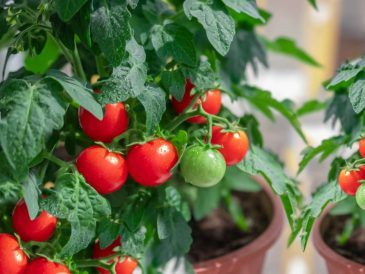Coffee is a beloved morning ritual for many, but once you’ve brewed your cup, what happens to the leftover grounds? Instead of tossing them in the trash, consider their potential in your garden. Coffee grounds are a versatile resource that can enhance the health and productivity of your plants. By reusing coffee grounds, you not only reduce waste but also enrich your garden in numerous ways. This article explores ten innovative methods to incorporate coffee grounds into your gardening routine, transforming them from waste to a valuable asset.
Understanding the Benefits of Coffee Grounds for Plants
Coffee grounds are rich in nitrogen, a crucial nutrient that supports plant growth. They also contain other essential minerals such as potassium, phosphorus, and magnesium. These nutrients make coffee grounds an excellent organic amendment for the soil. Additionally, coffee grounds can improve soil structure, enhance drainage, and increase water retention. Their slightly acidic nature can also be beneficial for certain plants. By understanding these benefits, gardeners can effectively utilize coffee grounds to promote healthier and more vibrant plants.
1. Enhancing Soil Fertility with Coffee Grounds
Incorporating coffee grounds into your soil can significantly boost its fertility. The nitrogen content in coffee grounds helps to enrich the soil, promoting vigorous plant growth. To use coffee grounds as a soil amendment, simply sprinkle them around the base of your plants and gently work them into the top layer of soil. This practice not only adds nutrients but also improves soil texture, making it more conducive to root development.
2. Using Coffee Grounds as a Natural Pest Repellent
Coffee grounds can serve as a natural deterrent against common garden pests such as slugs and snails. The abrasive texture of the grounds is uncomfortable for these pests to crawl over, while the caffeine content can be toxic to them. To protect your plants, create a barrier of coffee grounds around vulnerable plants or sprinkle them directly onto the soil surface. This eco-friendly pest control method helps to keep your garden healthy without the need for chemical pesticides.
3. Improving Compost Quality with Coffee Grounds
Adding coffee grounds to your compost pile can accelerate the decomposition process and enhance the overall quality of your compost. The nitrogen-rich nature of coffee grounds makes them an excellent ‘green’ material, balancing the ‘brown’ materials like dried leaves and straw. As the coffee grounds break down, they release nutrients that enrich the compost, resulting in a more nutrient-dense amendment for your garden.
4. Creating a Coffee Ground Mulch for Moisture Retention
Coffee grounds can be used as an effective mulch to help retain soil moisture and regulate soil temperature. Spread a thin layer of coffee grounds around the base of your plants, ensuring not to pile them too thickly to avoid compacting the soil. This mulch layer helps to reduce evaporation, keeping the soil moist for longer periods and reducing the need for frequent watering.
5. Acidifying Soil for Acid-Loving Plants
Certain plants, such as blueberries, azaleas, and rhododendrons, thrive in acidic soil conditions. Coffee grounds can help to lower the pH of the soil, making it more acidic and suitable for these acid-loving plants. To acidify your soil, mix coffee grounds into the soil around these plants or add them to your compost that will be used in these areas.
6. Boosting Carrot and Radish Growth with Coffee Grounds
Carrots and radishes can benefit from the addition of coffee grounds to the soil. The grounds help to create a looser soil structure, which is ideal for root crops. Before planting, mix coffee grounds into the soil where you plan to grow these vegetables. This practice can lead to improved root development and healthier, more robust crops.
7. Attracting Earthworms to Your Garden
Earthworms are beneficial creatures that aerate the soil and enhance its fertility. Coffee grounds can attract earthworms to your garden, as they are drawn to the organic matter and nutrients. By incorporating coffee grounds into your soil or compost, you create an inviting environment for earthworms, which in turn helps to improve soil health and plant growth.
8. Using Coffee Grounds to Suppress Fungal Diseases
Coffee grounds have natural antifungal properties that can help to suppress certain fungal diseases in the garden. By incorporating coffee grounds into the soil or using them as a mulch, you can reduce the incidence of fungal infections such as damping-off disease. This natural approach to disease prevention helps to maintain a healthy garden ecosystem.
9. Making a Liquid Fertilizer from Coffee Grounds
Coffee grounds can be used to create a nutrient-rich liquid fertilizer for your plants. To make this fertilizer, soak used coffee grounds in water for several days, then strain the liquid into a watering can. This ‘coffee ground tea’ can be used to water your plants, providing them with a gentle nutrient boost. This method is particularly useful for container plants and seedlings.
10. Repurposing Coffee Grounds for Seed Starting
Coffee grounds can be used as a component in seed starting mixes. Their fine texture and nutrient content make them an excellent addition to the soil mix for starting seeds. Combine coffee grounds with other seed starting materials, such as peat moss and vermiculite, to create a well-balanced medium that supports seed germination and early growth.
Conclusion: Maximizing the Benefits of Coffee Grounds in Gardening
Reusing coffee grounds in your garden is a simple yet effective way to enhance plant health, improve soil quality, and reduce waste. By understanding and applying the various methods outlined in this article, you can transform used coffee grounds into a valuable resource for your garden. Whether you’re looking to boost soil fertility, deter pests, or support plant growth, coffee grounds offer a sustainable solution that benefits both your garden and the environment. Embrace these practices and enjoy the rewards of a thriving, eco-friendly garden.




